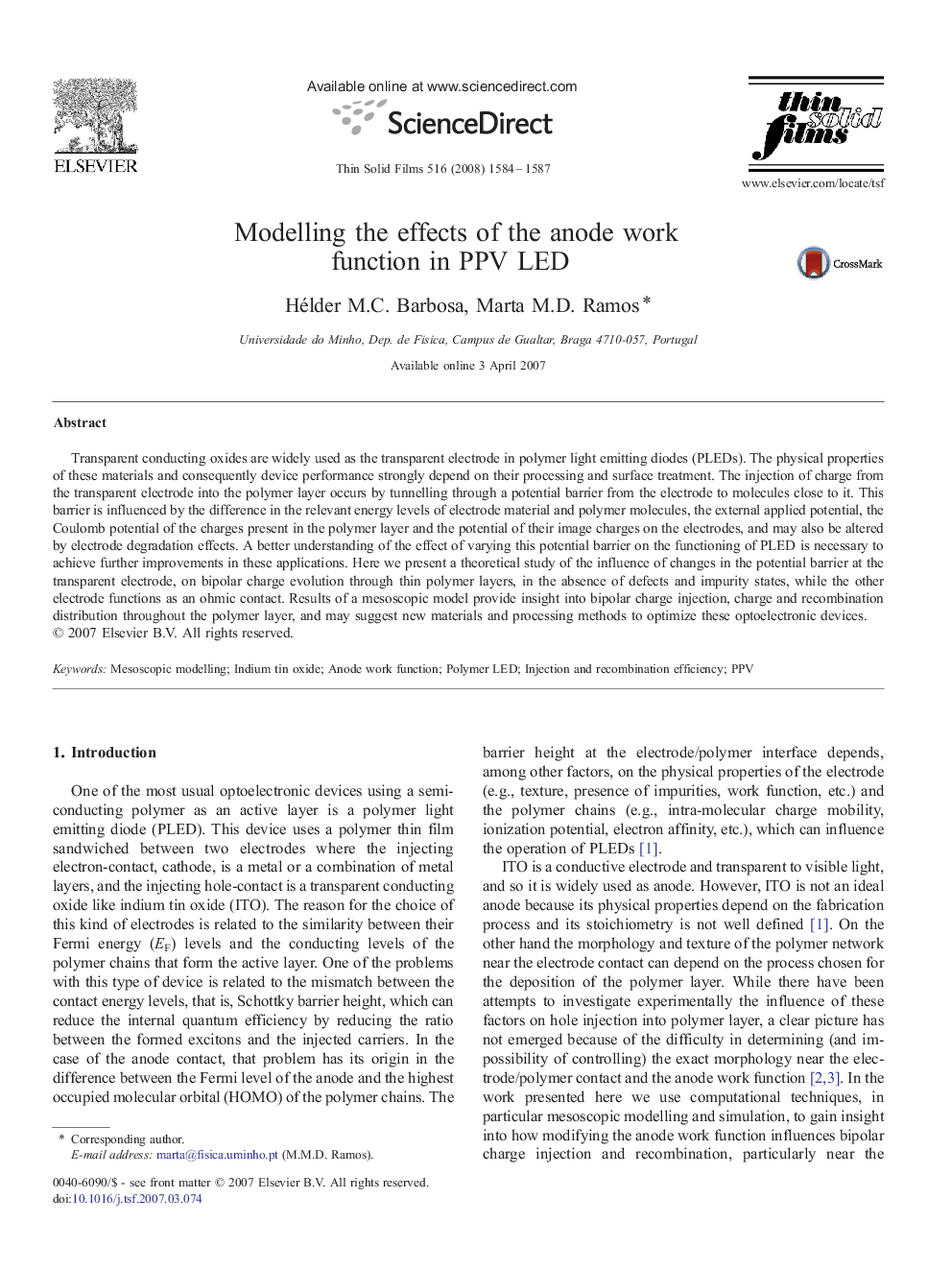| Article ID | Journal | Published Year | Pages | File Type |
|---|---|---|---|---|
| 1675290 | Thin Solid Films | 2008 | 4 Pages |
Transparent conducting oxides are widely used as the transparent electrode in polymer light emitting diodes (PLEDs). The physical properties of these materials and consequently device performance strongly depend on their processing and surface treatment. The injection of charge from the transparent electrode into the polymer layer occurs by tunnelling through a potential barrier from the electrode to molecules close to it. This barrier is influenced by the difference in the relevant energy levels of electrode material and polymer molecules, the external applied potential, the Coulomb potential of the charges present in the polymer layer and the potential of their image charges on the electrodes, and may also be altered by electrode degradation effects. A better understanding of the effect of varying this potential barrier on the functioning of PLED is necessary to achieve further improvements in these applications. Here we present a theoretical study of the influence of changes in the potential barrier at the transparent electrode, on bipolar charge evolution through thin polymer layers, in the absence of defects and impurity states, while the other electrode functions as an ohmic contact. Results of a mesoscopic model provide insight into bipolar charge injection, charge and recombination distribution throughout the polymer layer, and may suggest new materials and processing methods to optimize these optoelectronic devices.
